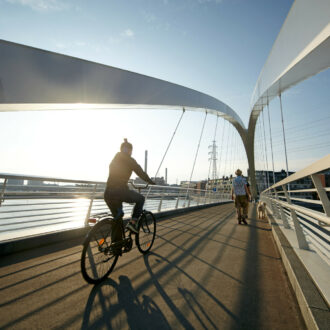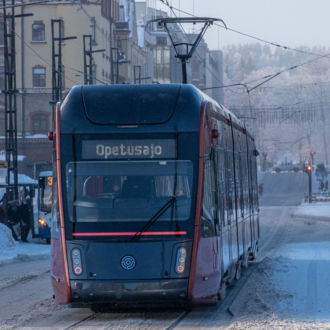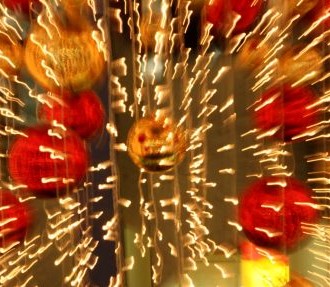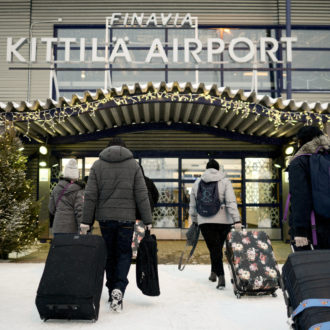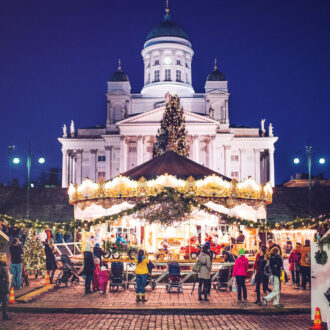The tram doors slide open and I step aboard the number two, leaving the damp autumn air behind. Inside, the soft murmur of conversation mixes with shoes squeaking on wet rubber. Teenagers pile into the booth next to me, laughing and joking, as the tram eases forward.
The motor hums steadily. Wheels clatter as we traverse a junction. The seat opposite is patterned with a stylised map of the tram network, red lines tracing across grey fabric. Overhead, a screen flickers with weather updates and ads for seasonal fashion.
These sights and sounds are ordinary, yet they hold a nostalgic pull for me and many others in the city.
Stepping into history
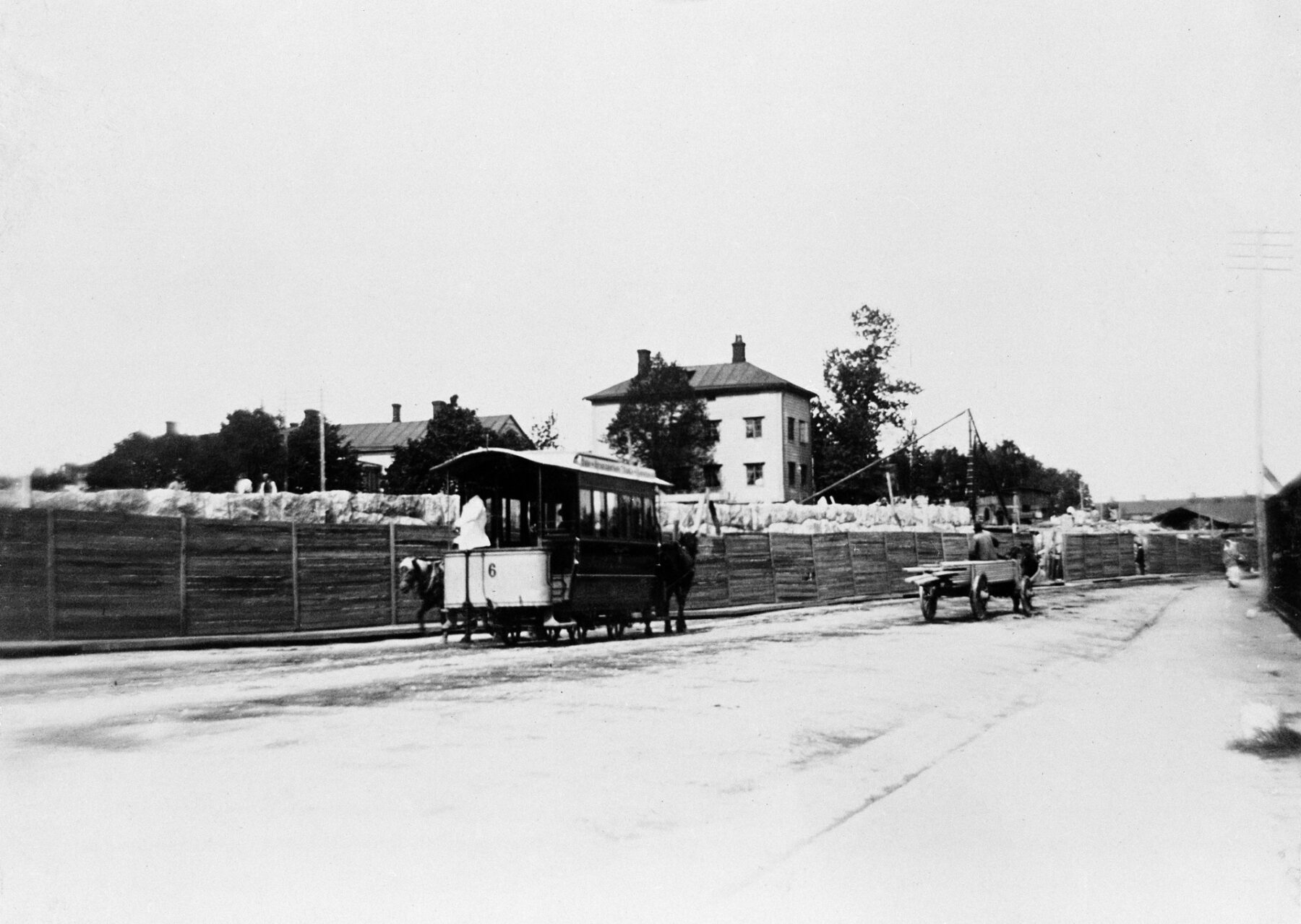
Helsinki’s first trams, introduced in 1891, were pulled by horses along just two short lines. Though slow and expensive to operate, these wooden carriages marked the beginning of the city’s journey on rails.Photo: Karl Mitterhusen / Helsinki City Museum
That thought stays with me as I make my way to the Töölö neighbourhood and step into the Tram Museum, housed in a former depot built in 1900. On this particular Saturday, the museum is alive with its annual Tramtastic! family event.
Children dance on stage to cheerful music. Families crowd around craft tables where kids can design their own tram colour schemes in bright crayon shades. Little feet clatter up and down the steps of historic carriages.
The museum’s collection invites this kind of play. Visitors climb into wooden cars with brass fittings, sit on polished benches worn smooth by decades of passengers and imagine how the daily commute felt a century ago. One of the most striking exhibits is a horse-drawn tram from the 1890s. “For ten years, the trams were pulled by horses,” explains Suvi-Tuuli Waltari, a museum educator with the Helsinki City Museum. “Then in 1900, the first motor tram was brought here from Germany.”
A growing city on rails
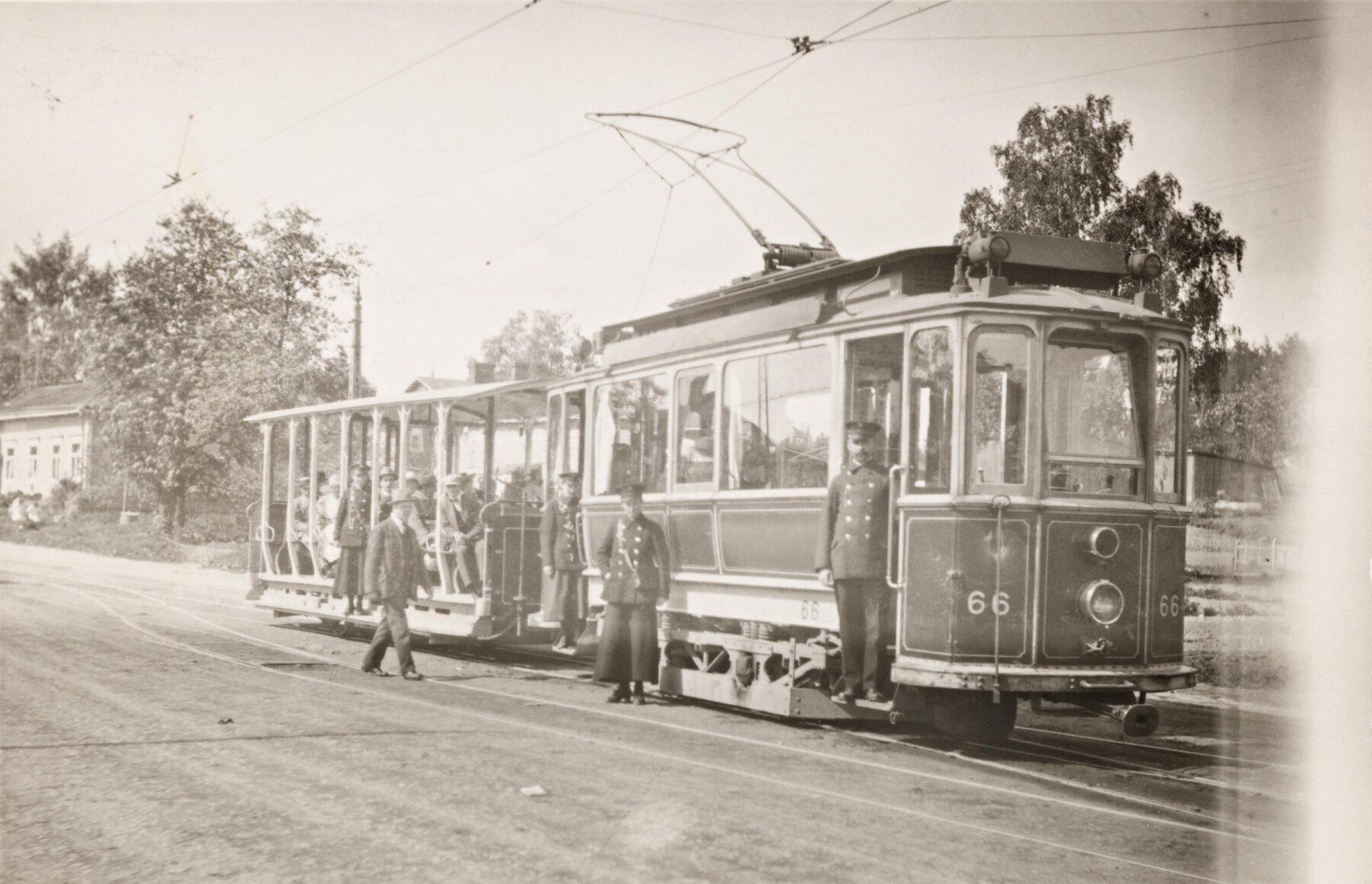
The pikkuruotsalainen (“Little Swede”) tram, built by ASEA in Sweden, and its open summer trailer became a beloved pair on city tracks. The breezy trailers were especially popular on hot days, so much so that passengers sometimes clung to the running boards or jumped off before the tram had fully stopped.Photo: Kaj Arnold-Larsen / Helsinki City Museum
Electrification arrived just as Helsinki was growing. “In the early 1800s the city was still small, and people could mostly walk everywhere,” Waltari says. “But as Helsinki expanded, we needed transportation for the people. By the 1920s and ’30s, the tram routes covered the whole city, and they were really packed.”
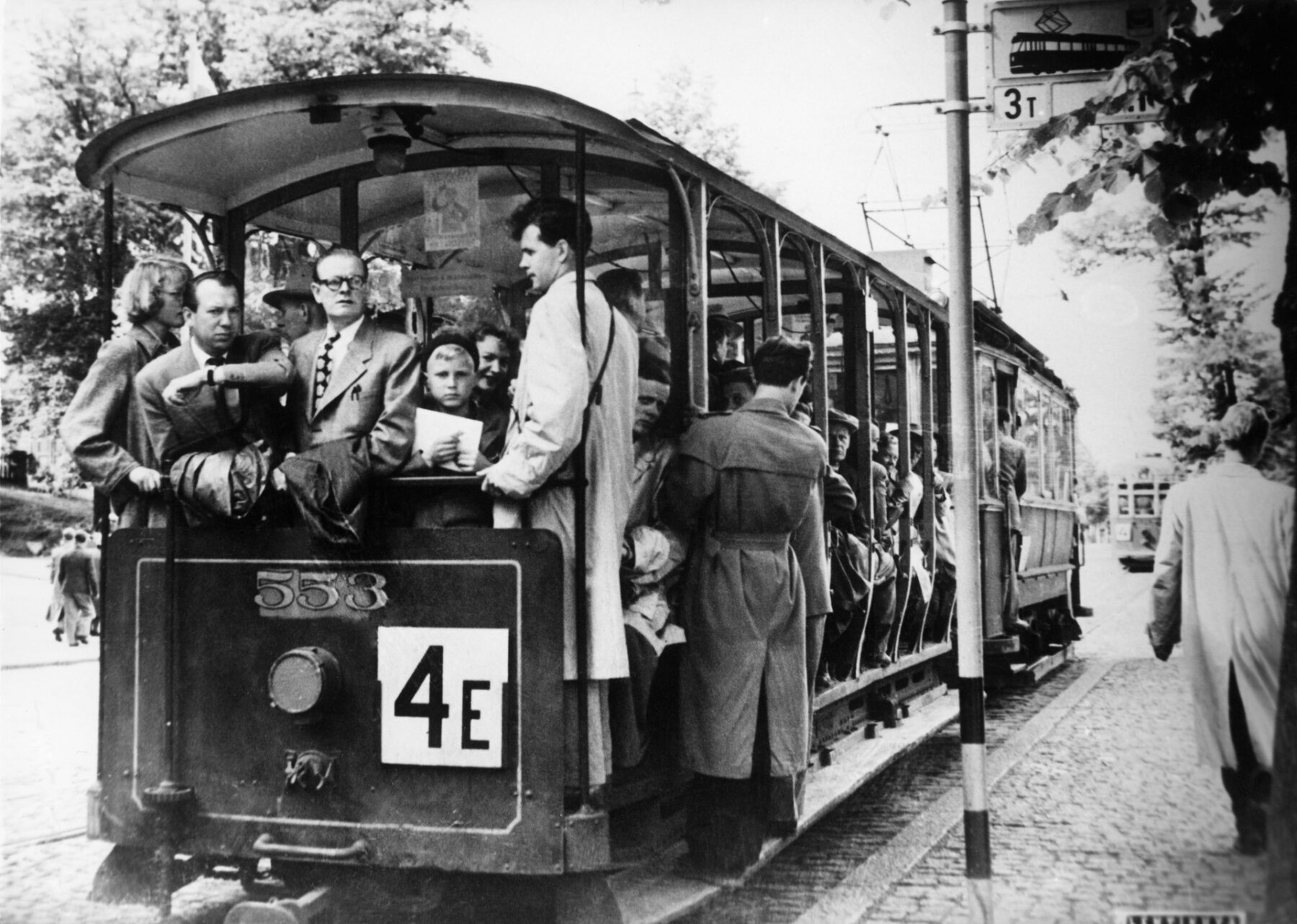
Though open trailers were meant only for summer use, wartime shortages forced them into winter service under tarpaulins. Their final flourish came during the Helsinki Olympics in 1952, when crowds crammed aboard one last time before the trailers disappeared from daily traffic.Photo: Helsinki City Museum
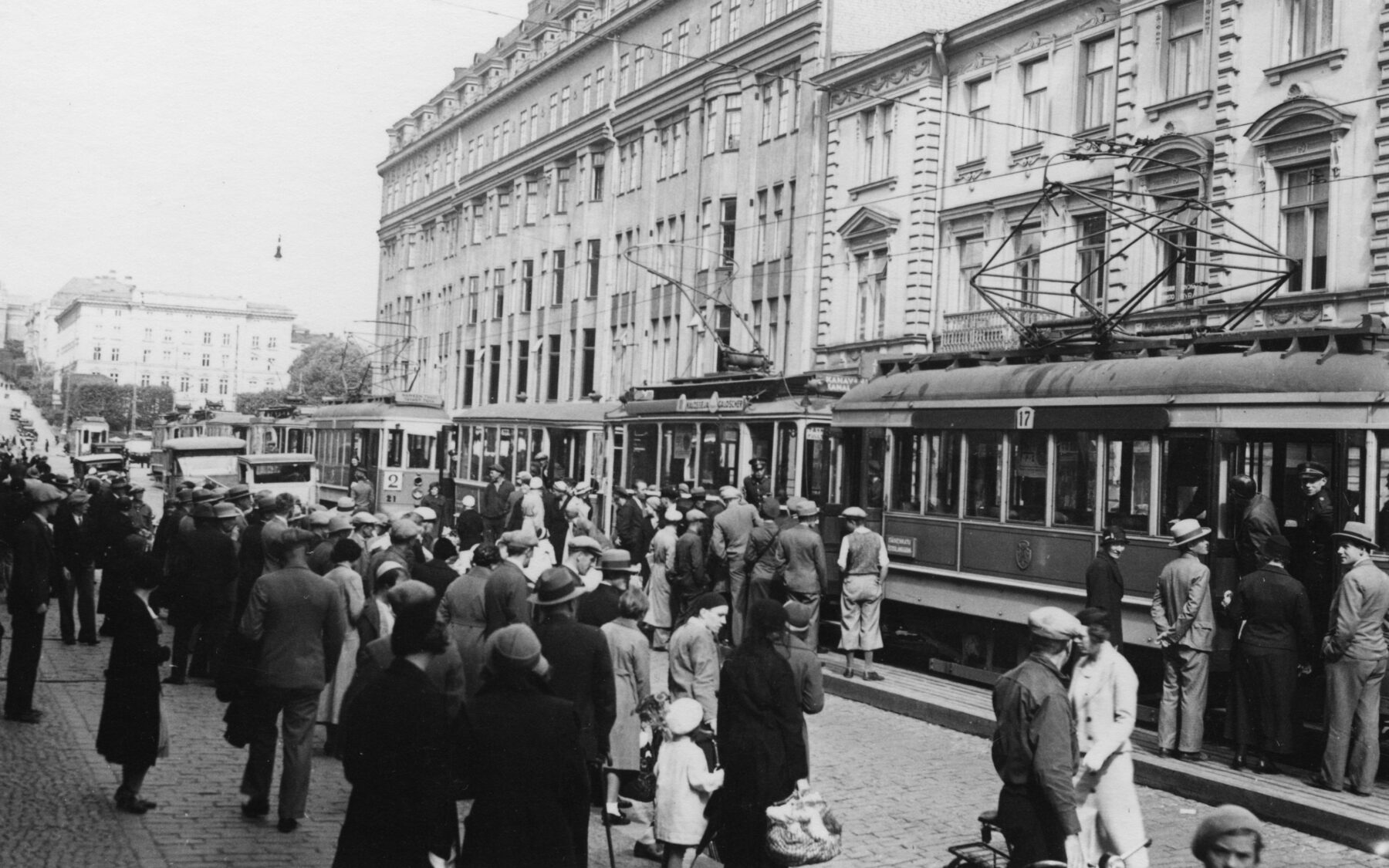
Horse-drawn trams first appeared in Turku in 1890, but the company soon went bankrupt, and service ended in 1892. Trams returned in 1908 with the launch of the electric network, which by the 1930s had become a bustling part of daily life, linking the harbour, Market Square, and growing suburbs.Photo: Birger Lundsten / Turku City Museum
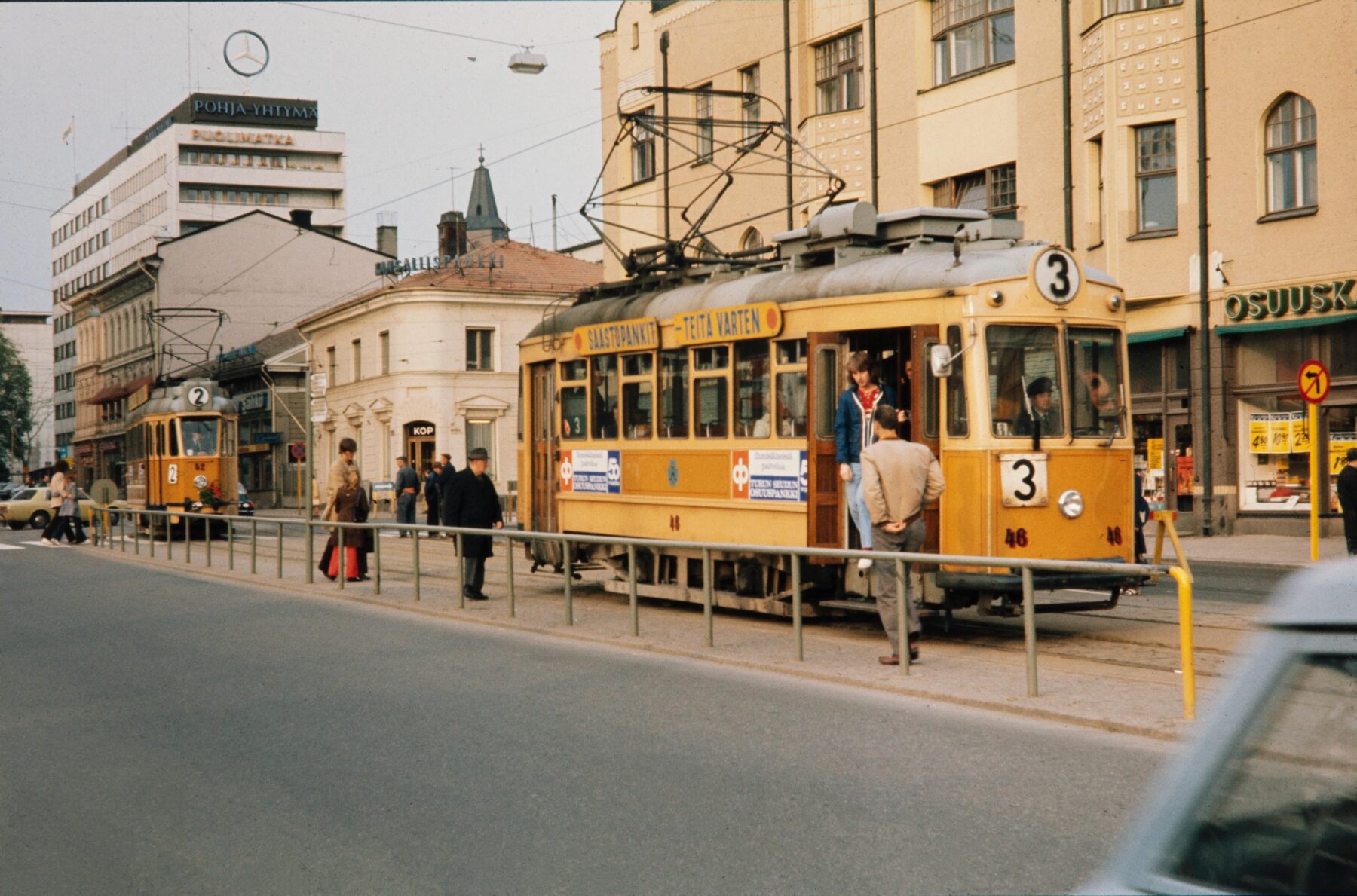
Turku’s electric trams ran for nearly 64 years, until 1972, when the system was dismantled. Rising car traffic and a shift toward buses were seen as more modern solutions, leading to the end of the city’s tram era.Photo: Carl Jacob Gardberg / Turku City Museum
Through war and winter, the trams kept running. During the 1940s, when buses were diverted to serve the army, trams became the main means of public transport in the city. By the 1960s, however, their future was uncertain. Many European cities tore out their tram systems, and Helsinki nearly did the same.
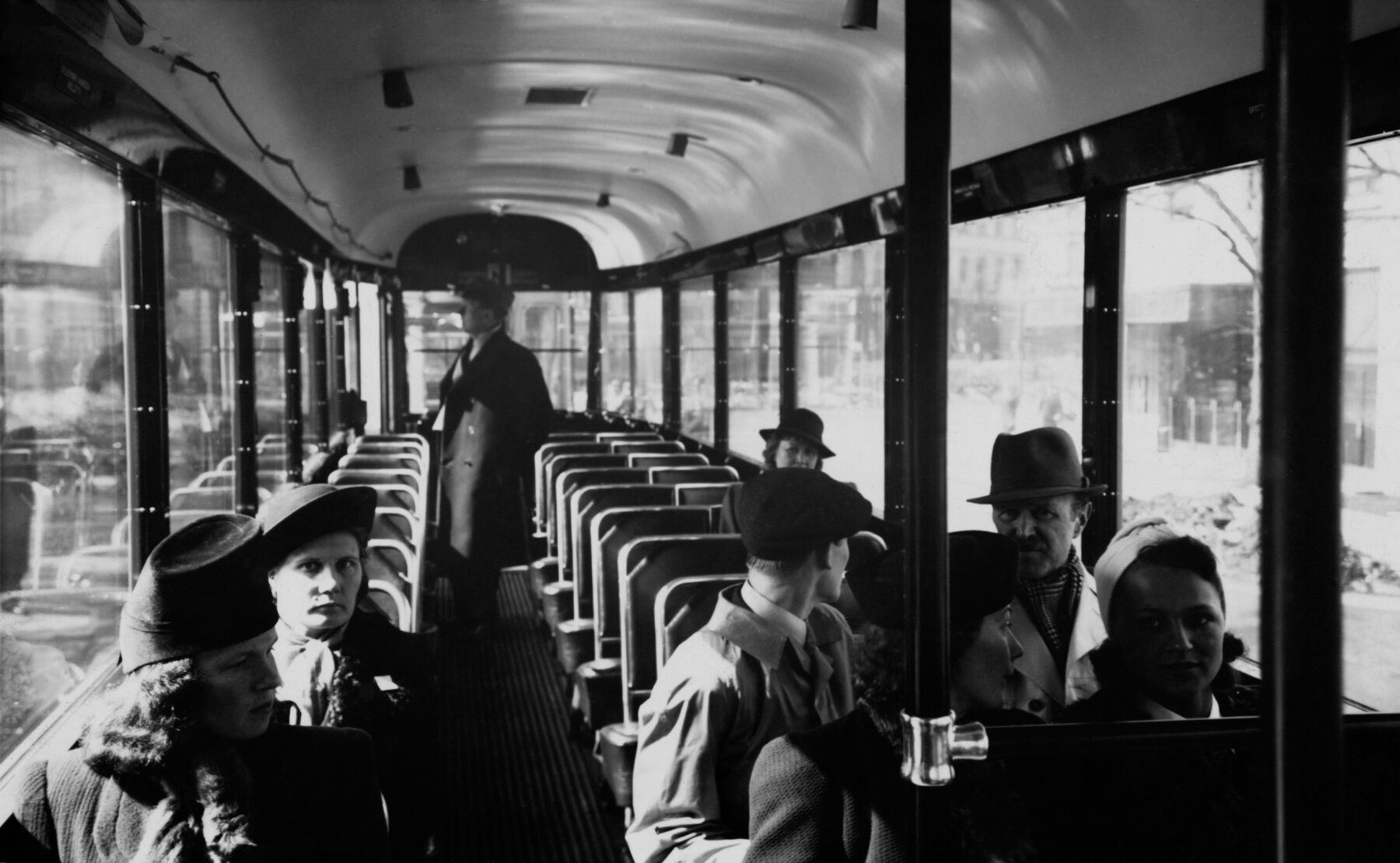
Trams provided an essential lifeline during wartime. With fuel shortages limiting other transport, trams kept the city moving and offered a sense of continuity in daily life.Photo: Helsinki City Museum
“We came very close to eliminating the whole tram system like they did in [the southwestern Finnish city of] Turku,” Waltari says. “But in the 1960s, different voices became more visible – about the environment and democracy. Big cars are not the best solution for everything.”
Still a viable solution

The Crown Bridges project, set to open in 2027, will create new tram, cycling and pedestrian links across Helsinki’s eastern waterfront, expanding access without adding car traffic.Illustration: WSP Finland
Today the decision to keep the trams feels farsighted. They fill a vital role in Helsinki’s transport network, linking neighbourhoods where buses or metro lines don’t reach, reducing congestion and offering a reliable, low-emission alternative to car travel.
Trams complement other modes of transport, creating a system that works efficiently for commuters, families and tourists alike. The system continues to grow, with several new lines operational or planned at the time of writing. An east-west light-rail line across the northern part of the city opened in 2023, and a new bridge is bringing tram traffic from the central neighbourhood of Hakaniemi to the eastern island of Laajasalo.
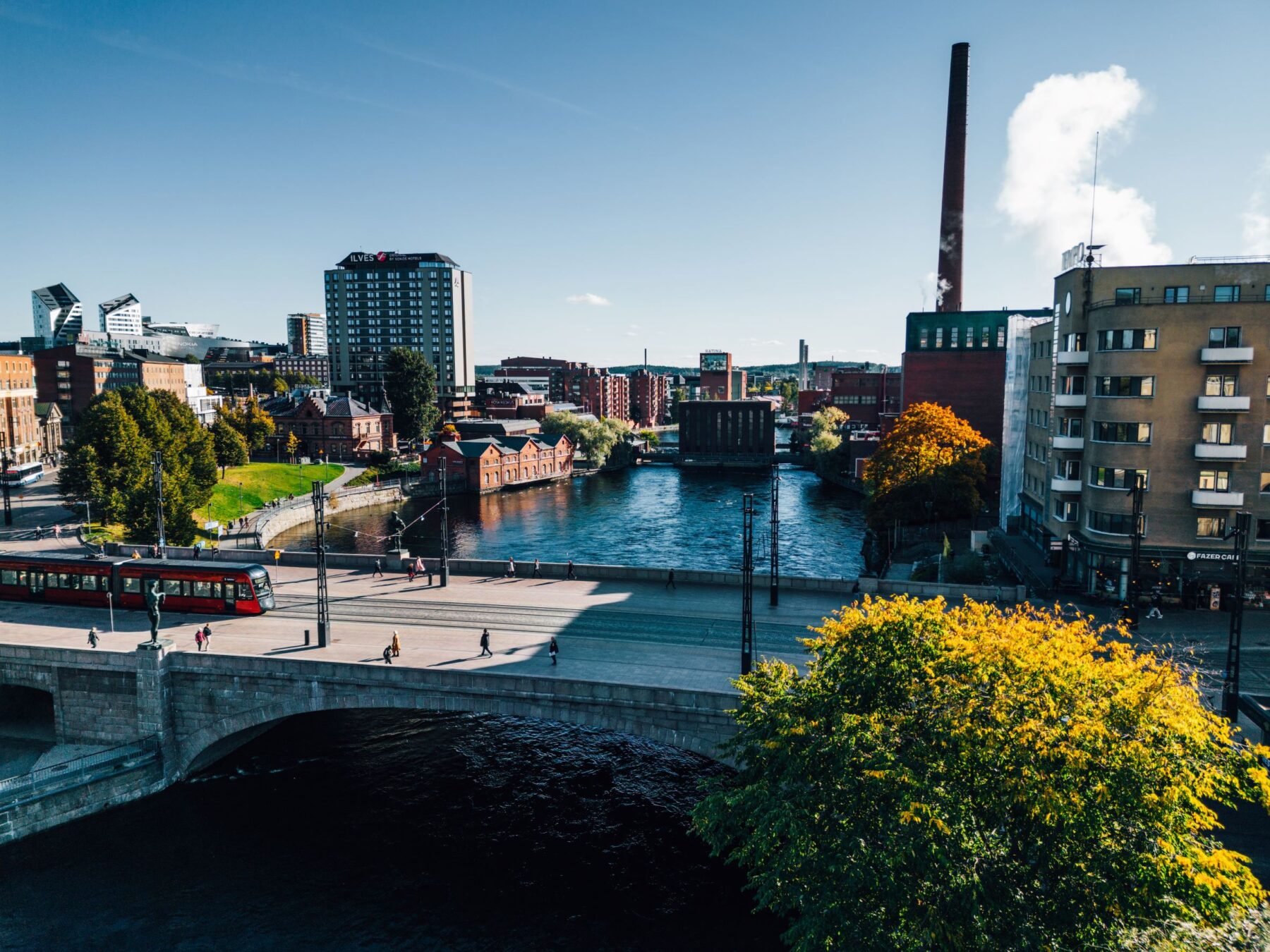
Tampere first considered building a tram system as early as 1907, but the plans stalled because of the First World War and financial constraints. More than a century later, the city’s first trams finally began running in 2021, marking a new era of public transport.Photo: Wille Nyyssönen / Tampereen Raitiotie Oy
Helsinki may have the country’s oldest and largest network, but trams are no longer its exclusive domain. In 2021, the southern central city of Tampere introduced a modern light rail, whose red carriages now glide down Hämeenkatu. Turku, which retired its last tram in 1972, is performing feasibility studies and seriously considering reintroducing this form of transport.
Tramstalgia
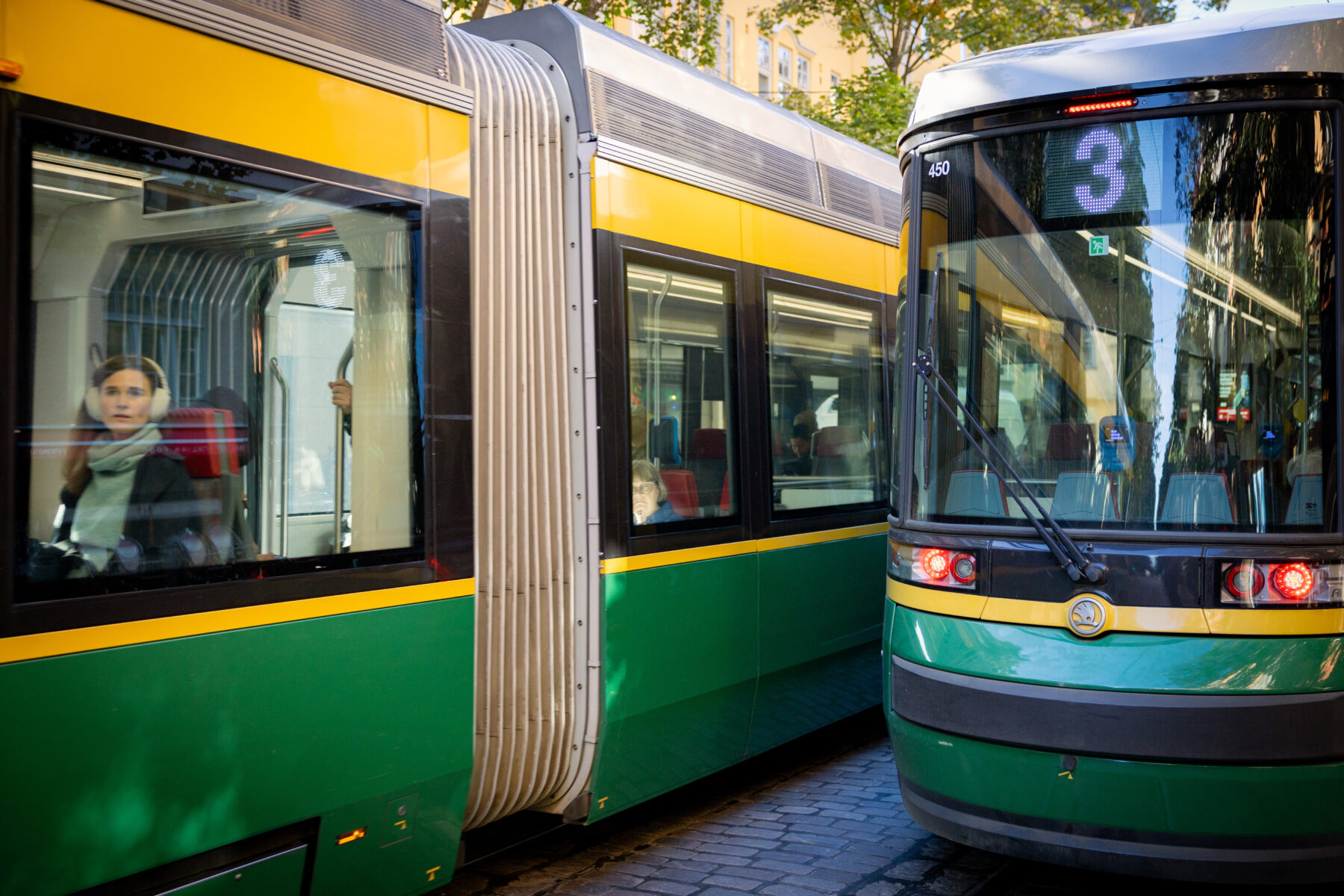
The Artic MLNRV-3 trams entered service in Helsinki in 2013. Built to handle the city’s sharp curves, steep hills and icy winters, they are fully low-floor with pivoting bogies and regenerative braking.Photo: Emilia Kangasluoma
For Helsinkians, affection for trams is not only practical, but deeply personal. The familiar green-and-yellow carriages are fiercely beloved. In the 1970s, when the city experimented with an orange and grey livery, the public backlash was swift and strong. “People got really mad and wanted the green and yellow ones back,” Waltari says with a grin.
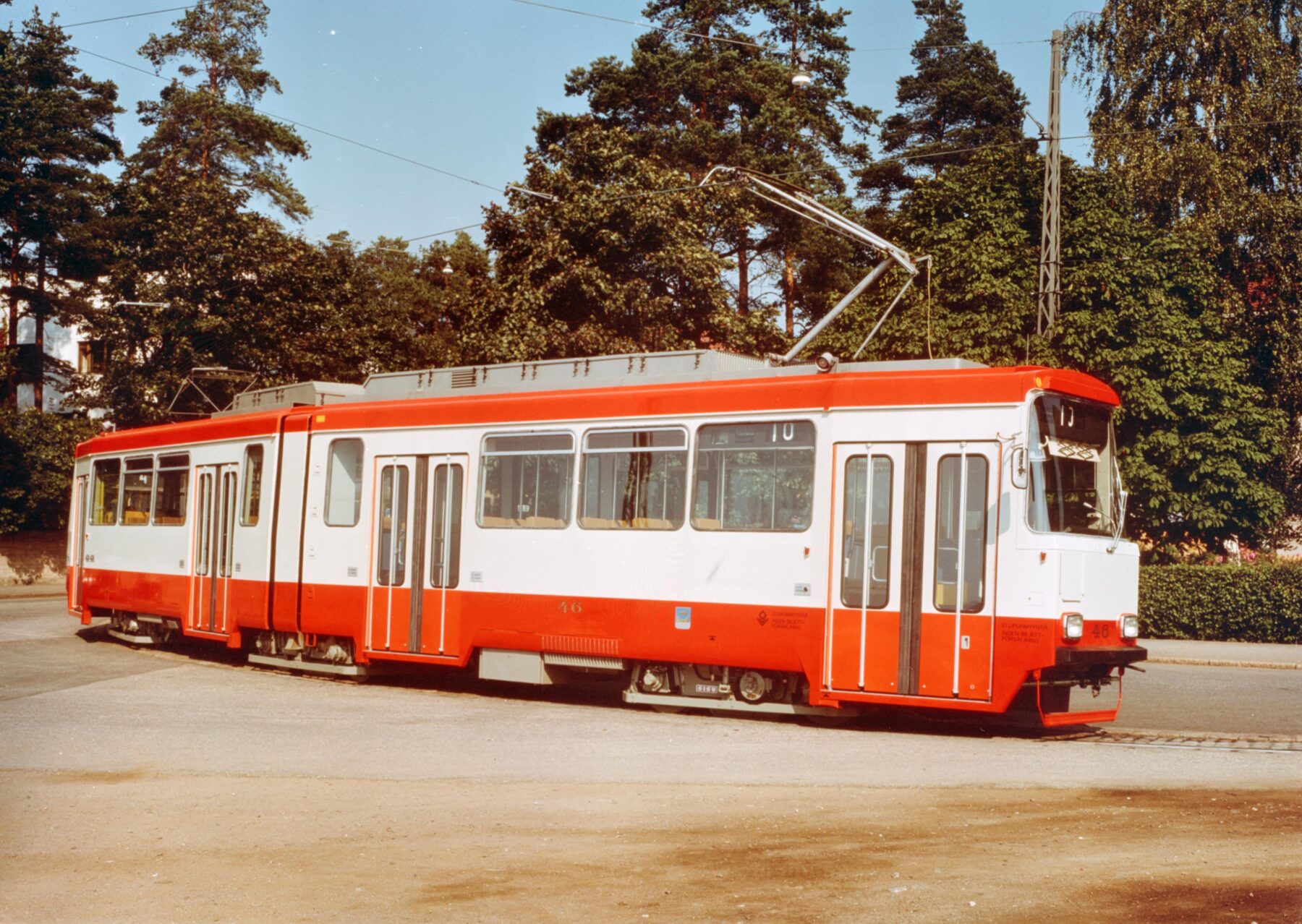
The Valmet Nr I class entered service in 1973, followed by the nearly identical Nr II in 1983, both originally painted light grey with orange stripes instead of the traditional green and yellow. Due to public dislike, Helsinki City Transport began reverting the livery in 1986, and by 1995 all units had been repainted green and yellow. Today, some Nr I and Nr II trams are still in Helsinki’s fleet.Photo: Vapriikki Photo Archive
Their sounds, too, form part of the city’s identity: the hum of the electric motor, the clatter of wheels at junctions, the rattle of the doors opening and closing. “When we renovated this exhibition, we collected memories from people about public transportation,” Waltari says. “Most people remembered the sounds of the tram, and it was home.”
Transit for everyone
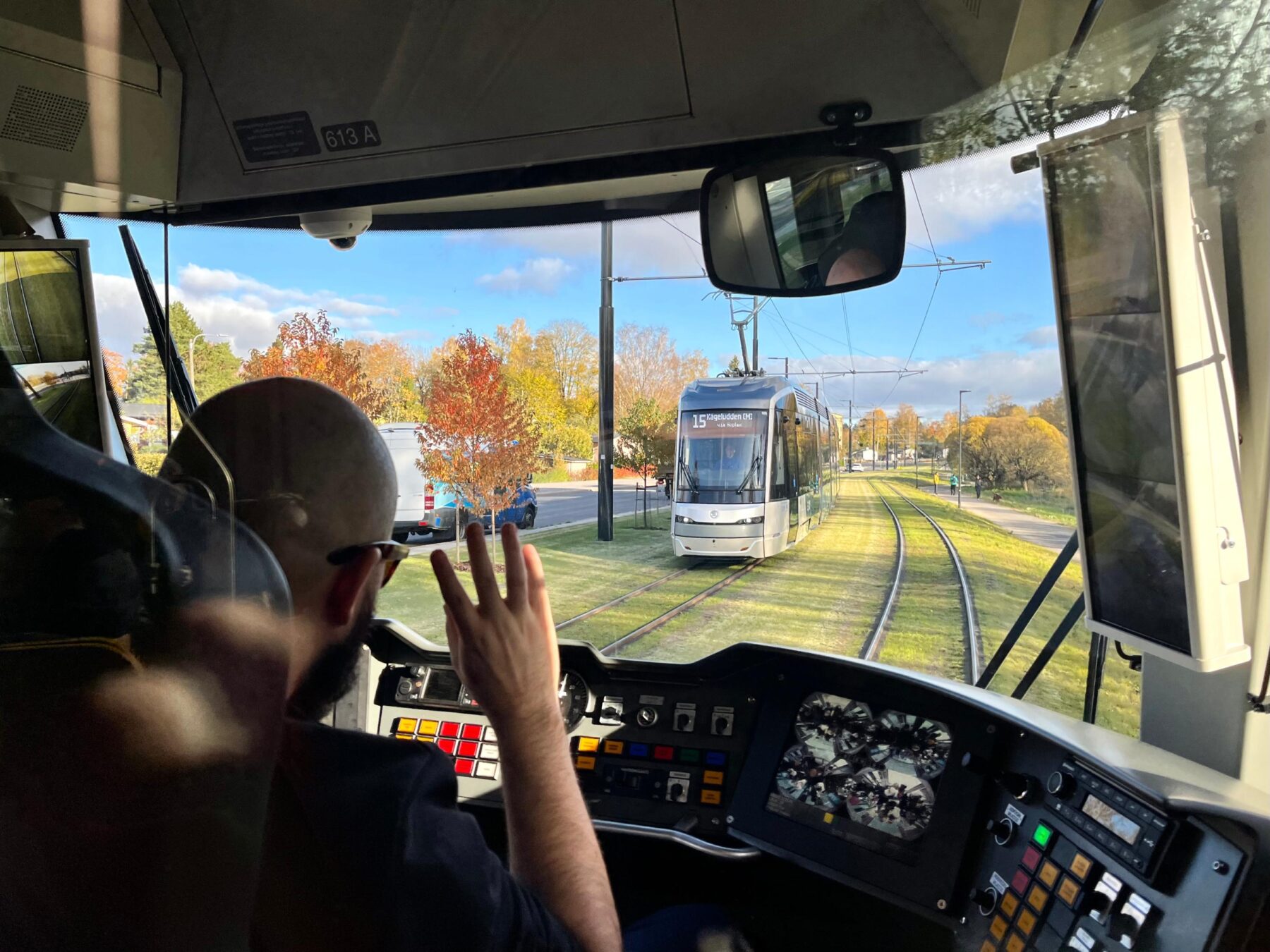
Helsinki’s light-rail line 15, the first of its calibre in the country, opened in 2023. With longer vehicles, fewer stops and higher speeds than regular trams, it connects eastern Helsinki with Espoo in the west without detouring through downtown.Photo: Merja Wesander / Helsinki City Museum
Leaving the museum, I step back onto the number two and take a seat. People from all walks of life are present: a young man scrolling on his phone, an elderly woman with a walking cane, a group of women chatting about the card reader in Swedish (one of Finland’s official languages). For a few moments, we are all sharing the same ride.
That shared space is intentional. Low floors and wide doors make boarding simple for parents with prams or passengers using wheelchairs.
Clear signage and card readers in multiple languages help newcomers. Modern vehicles run quietly and efficiently, and so do the fleet’s remaining 1970s models, which share the same tracks.
Ordinary and extraordinary
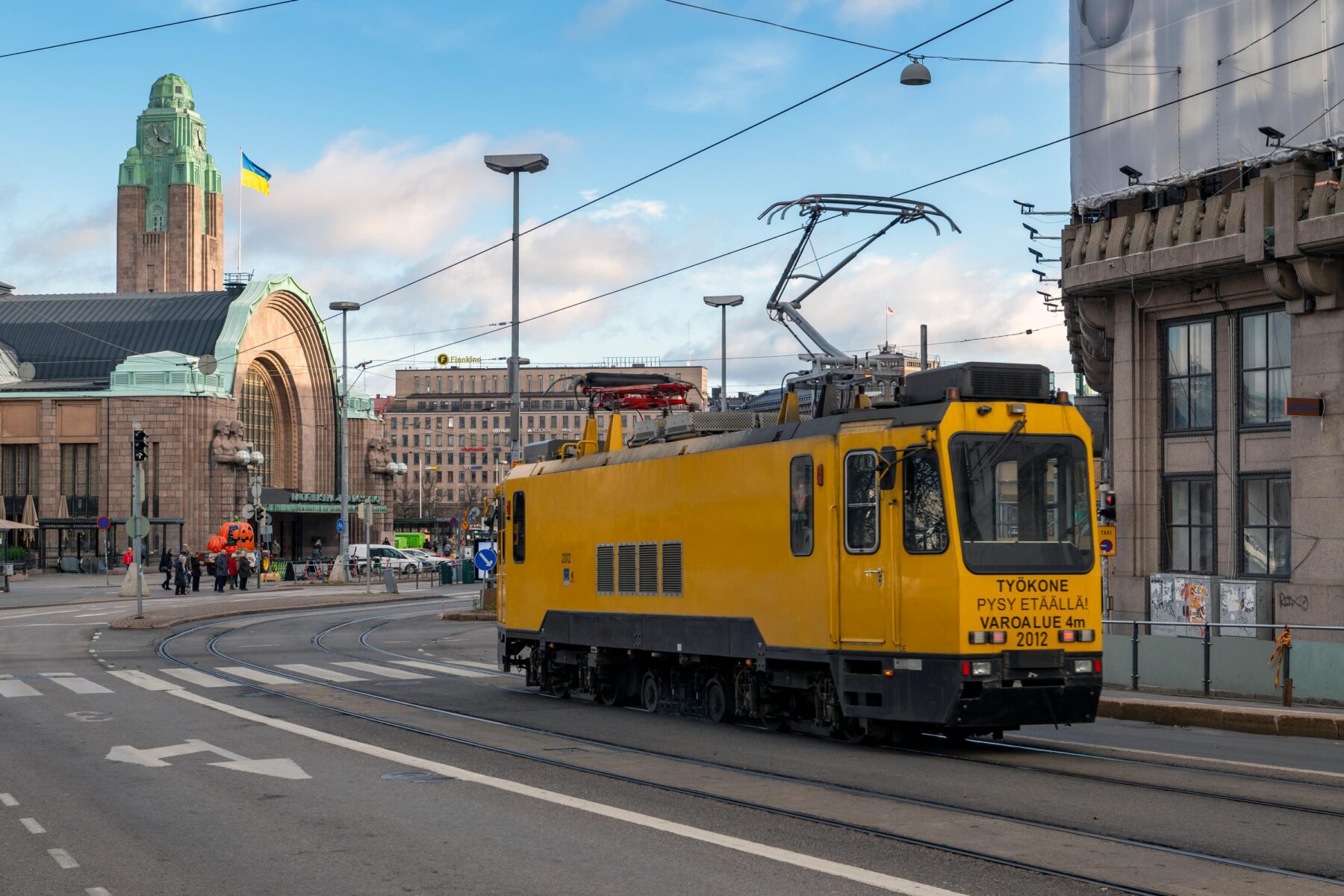
Affectionately nicknamed Banana for its yellow paint and angular shape, this is Helsinki’s workhorse tram. It keeps the lines running smoothly by honing tracks, brushing off snow and even applying glycerol to prevent ice on overhead wires.Photo: Pekka Vyhtinen / Helsinki City Museum
As my tram coasts past familiar streets and landmarks, the steady hum of the motor and the periodic clatter of wheels on the tracks create a quiet, meditative rhythm for me.
I’m reminded that these journeys are both ordinary and remarkable. The tram is more than just a way to get across town. It’s a thread that ties together history, everyday life and the city’s future.
By Tyler Walton, October 2025
